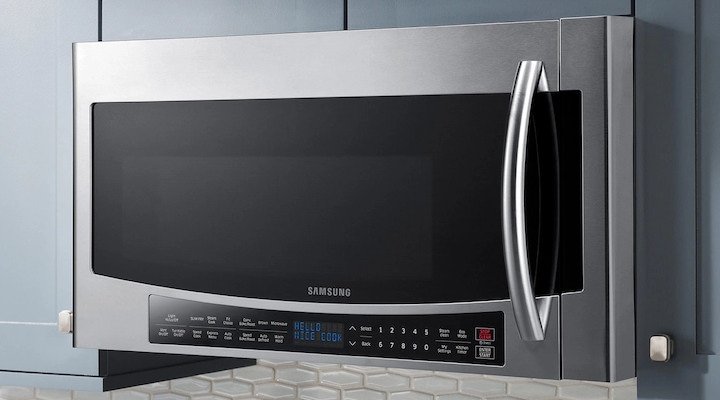
Microwave error codes can be baffling, but they’re actually designed to give you insight into what’s happening inside the device. Think of them as your appliance’s way of telling you, “Hey, something isn’t quite right here.” The E1 error code on a Samsung microwave usually points to a problem with the temperature sensor or even some kind of wiring issue. It’s similar to a car’s check engine light; it doesn’t tell you precisely what’s wrong but gives you a good place to start your investigation.
Understanding the E1 Error Code
When your Samsung microwave displays the E1 error code, it’s like a gentle nudge suggesting something is amiss with the temperature sensor. This sensor is a pivotal part of your microwave, making sure things don’t heat up too much or too little. Imagine trying to bake a cake without a thermometer in the oven; you’d have no clue if you’re cooking it just right!
The E1 error might be a sign that the sensor isn’t able to detect temperatures properly. It could be due to a faulty sensor or even an issue with the wiring connecting the sensor to the main control board. You might be wondering why this matters? Well, without accurate temperature readings, your microwave can’t manage its power correctly, leading to uneven cooking results or, worse, a microwave that won’t work at all.
To tackle this, you might consider opening up the microwave to check the sensor. But here’s a word of caution: microwaves can hold dangerous electrical charges even when unplugged, so it’s usually best to consult a professional. Meanwhile, you can try resetting the microwave by unplugging it for a few minutes—sometimes, like with any tech we own, a simple reset can solve the problem.
Common Causes of the E1 Error Code
Let’s dive a bit deeper into why this pesky error might pop up. One common cause is a faulty temperature sensor. Just like a weather app that’s stuck in the past, if the sensor in your microwave can’t gauge the temperature correctly, your microwave throws its virtual hands up and says, “E1!”
Another possible culprit could be a wiring issue. Over time, the wires connecting the sensor to the control board can become loose or damaged, much like a frayed phone charger that stops working unless you hold it at a specific angle. When the connection is compromised, the control board might not receive the necessary data from the sensor, resulting in this error code.
Environmental factors can also play a role. Humidity, for instance, can affect the electrical components of a microwave, leading to various issues, including this error. Sometimes placing the microwave in a different spot or ensuring the kitchen is well-ventilated can help mitigate these conditions. Curious to know if you’re tackling the right issue? If your microwave is still under warranty, reaching out to Samsung’s support might save you a lot of troubleshooting time.
Steps to Resolve the E1 Error Code
Here’s the deal: before you start unscrewing panels and poking around, there are some basic steps you can try. First, as mentioned earlier, unplug the microwave for a solid five minutes. This acts as a hard reset, clearing any temporary glitches that might have tripped the sensor.
If the reset doesn’t work, visually inspect the microwave for any signs of obvious damage—like burnt wires or scorch marks. Remember, safety first! So, if you’re not comfortable or if things look complex, it’s best to call a technician. They have the right tools and expertise to safely probe the issue further.
Consider checking your owner’s manual too. It’s packed with tips and troubleshooting steps straight from the manufacturer, and sometimes a simple suggestion you haven’t thought of could be tucked away in there. Lastly, if your microwave is on the older side, it might be time to weigh the cost of repairs against the price of a new appliance.
Preventing Future E1 Errors
Want to keep that E1 error at bay? Regular maintenance can go a long way. Think of it like keeping your car’s engine in good shape with regular oil changes. Ensure your microwave is kept clean, as food debris can sometimes interfere with the sensors and electronics.
Additionally, placing the microwave in a well-ventilated area prevents overheating and helps components function optimally. Avoid using the microwave for prolonged periods without breaks, as this can cause internal components to heat excessively, potentially leading to sensor failures.
If your home frequently experiences power surges, consider using a surge protector. These surges can damage sensitive electronics in your microwave, leading to issues like the E1 error. Keeping these proactive tips in mind can help extend the life of your microwave and keep those error codes at bay.
In conclusion, while the E1 error code might seem daunting, it’s largely manageable with some troubleshooting and preventive care. Remember, your microwave is a helpful tool in your kitchen, and a little understanding of its quirks can make all the difference in keeping it running smoothly.